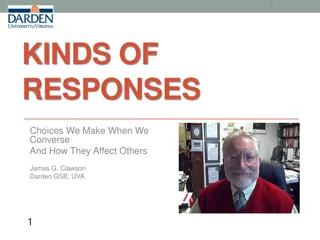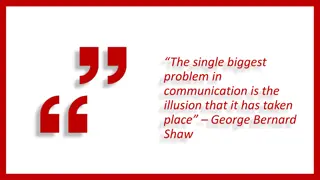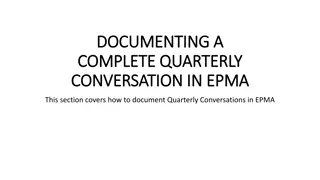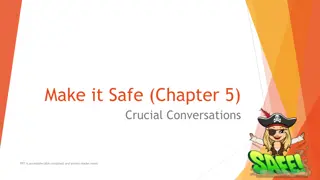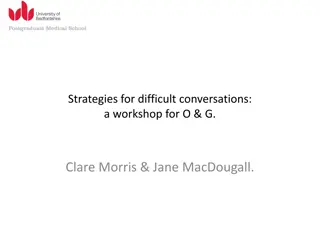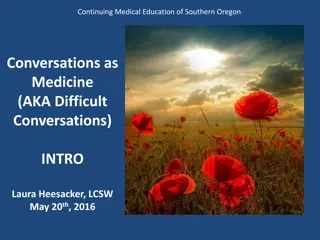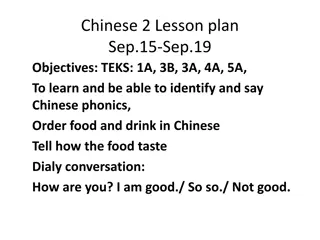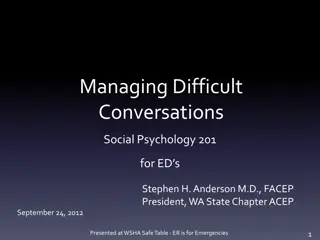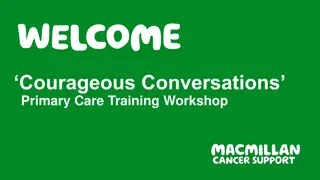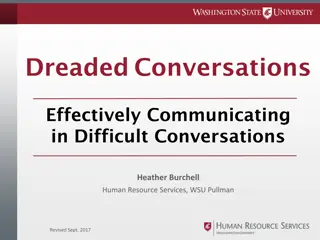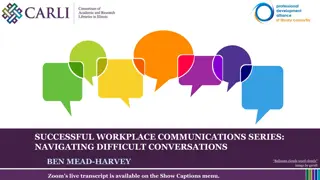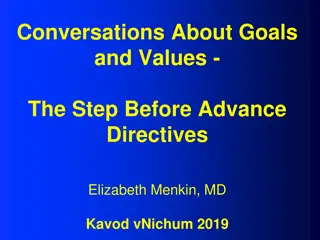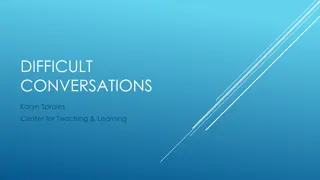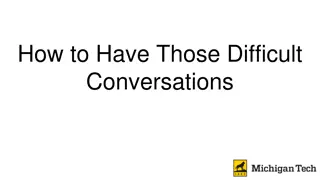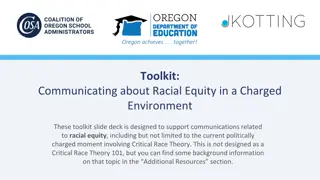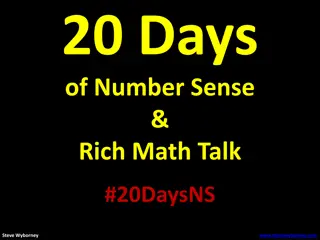Navigating Difficult Conversations in Education
Explore strategies for effectively leading challenging conversations in educational settings, drawing from the framework of Crucial Conversations: Tools for Talking When Stakes Are High. Reflect on past experiences, practice conversation techniques, and enhance self-awareness to foster productive dialogues with colleagues.
Download Presentation

Please find below an Image/Link to download the presentation.
The content on the website is provided AS IS for your information and personal use only. It may not be sold, licensed, or shared on other websites without obtaining consent from the author.If you encounter any issues during the download, it is possible that the publisher has removed the file from their server.
You are allowed to download the files provided on this website for personal or commercial use, subject to the condition that they are used lawfully. All files are the property of their respective owners.
The content on the website is provided AS IS for your information and personal use only. It may not be sold, licensed, or shared on other websites without obtaining consent from the author.
E N D
Presentation Transcript
Leading Difficult Conversations To copy or adapt this material, see OpportunityCulture.org/terms-of-use 2019 |1
School Excellence Portal Log on to the OC School Excellence Portal: opportunityculture.org/portal Having Problems? Let us know here! 2019 |2
Revisit Self-Reflection See Handout Time for reflection: 10 minutes 2019 |3
Handshake Partners Find a partner you do not interact with often and discuss your self-reflection: 1. What s changed? 2. What would you like to improve? 3. How did you rate yourself on Question 14? 2019 |4
Session Objectives Introduce frameworks from the book Crucial Conversations: Tools for Talking When Stakes Are High to lead productive difficult conversations. Practice leading a difficult conversation. 2019 |5
Reflection 1. On a scratch sheet of paper, write a summary of a difficult conversation you have experienced as a teacher with another adult. 2. Reflect: How did you plan for this difficult conversation? 3. Consider: What made the conversation so difficult? 4. What was the outcome of the conversation? Time for reflection: 5 minutes 2019 |6
Crucial Conversations A framework from Crucial Conversations: Tools for Talking When Stakes Are High Source: Patterson, Kerry, Grenny, Joseph, McMillan, Ron. Crucial Conversations: Tools for Talking When Stakes Are High. New York: McGraw-Hill. 2019 |7
Crucial Conversations Model Source: Crucial Conversations: Tools for Talking When Stakes Are High by Patterson, Grenny, McMillian, Switzler Poster image retrieved from https://www.vitalsmarts.com/resource/crucial-conversations-book/ 2019 |8
STATE: A Tool to Lead the Conversation Talk tentatively. (Perhaps; In my opinion ) Share your facts. (I noticed ) Tell your story. (It made me think ) WHAT HOW Encourage testing. (I would love to hear your thoughts ) Ask for others path. (What is your take?...) Source: Patterson, Kerry, Grenny, Joseph, McMillan, Ron. Crucial Conversations: Tools for Talking When Stakes Are High. New York: McGraw-Hill. 2019 |9
Discussion If given the opportunity to redo your difficult conversation: 1. How would you approach the conversation now? 2. What would be different this time around? 2019 |10
Crucial Conversations Model Source: Crucial Conversations: Tools for Talking When Stakes Are High by Patterson, Grenny, McMillian, Switzler Poster image retrieved from https://www.vitalsmarts.com/resource/crucial-conversations-book/ 2019 |11
Jigsaw: Their Meaning See Handout Make It Safe Explore Others Paths Learn to Look Source: Crucial Conversations: Tools for Talking When Stakes Are High by Patterson, Grenny, McMillian, Switzler Poster image retrieved from https://www.vitalsmarts.com/resource/crucial-conversations-book/ 2019 |12
Jigsaw: Their Meaning 1. Read through the packet individually. 2. Discuss content as a group. 3. Write or draw a summary of the content on your chart paper. 4. Make a plan to present your topic to the full group. Who will present? How will you engage all team members? How can you make your presentation engaging for the audience?? 2019 |13
Crucial Conversations Model Source: Crucial Conversations: Tools for Talking When Stakes Are High by Patterson, Grenny, McMillian, Switzler Poster image retrieved from https://www.vitalsmarts.com/resource/crucial-conversations-book/ 2019 |17
Move to Action Both participants should agree on next steps: 1. Who? 2. Will do what? 3. By when? 4. How will we follow up? 2019 |18
Work Time See Handout Use the Difficult Conversations Planning Template to prepare to role-play your difficult conversation. 2019 |19
Practice! Practice having a difficult conversation with your partner. Time Allotted Task 2 minutes Share background context with your partner: Who are you having a conversation with? What is the issue? How did it start? Where are you now? How will the person likely respond? 5 minutes Role-play conversation 3 minutes Debrief conversation: What went well about the conversation? Were there any moments that may have slipped into silence or aggression? How could your partner improve? 2019 |20
Action Items Write down 2-3 action items you commit to incorporating into your work based on your takeaways from this session. For example: Action Item People Timeline Status Notes 2019 |21
Exit Slip Thank you for your engagement and participation. Please complete the exit slip to provide feedback on this session prior to leaving. 2019 |22
1 Sources Patterson, Kerry, Grenny, Joseph, McMillan, Ron. Crucial Conversations: Tools for Talking When Stakes Are High. New York: McGraw-Hill. 2019 |23
Follow Us! Keep up to date on Opportunity Culture with resources and research from Public Impact by following: @OppCulture @PublicImpact Facebook.com/OpportunityCulture Facebook.com/PublicImpact LinkedIn.com/company/public-impact---chapel-hill-nc Subscribe to the quarterly Opportunity Culture newsletters, with content by and for Opportunity Culture educators, and sign up to get Remind messages for them: Remind.com/join/ocnew OpportunityCulture.org/mailing-list/ 2018 |24


